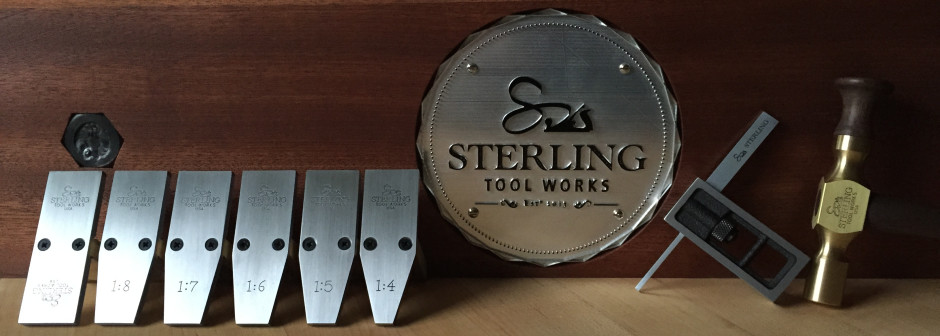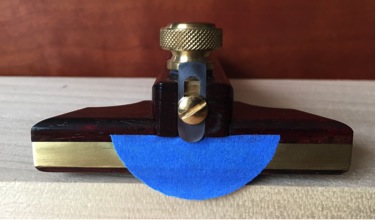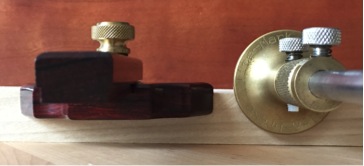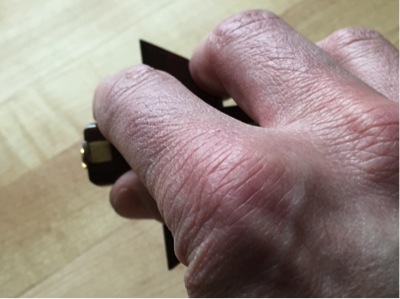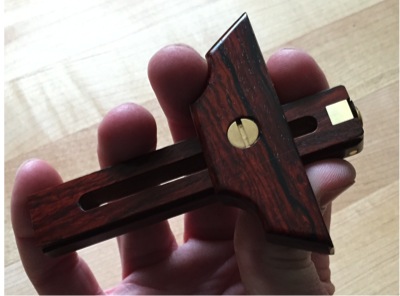I have used Jeff Hamilton (of Hamilton Woodworks) marking gauges for years, in my opinion they are one of the best on the market. Beautifully crafted from select hardwoods they are excellent tools for the craftsman. The design is genius with several features that are unmatched in the industry. I love these gauges and am very happy that I am able to offer them through the Artisan Tool Chest. Here is a review of the features that make the gauge so useful.
The 4″ gauge features a 3″ wide fence, with inlaid brass wear strip, that provides a large surface to ensure complete registering on your work piece. Other marking gauges that are circular on the market have only about 30% of the area that registers the work piece. Not to mention that circular marking gauges like to roll off your bench.
Here is a comparison of contact area of two types of gauges. The length and area of the fence that will contact your stock are extremely important.
The fence is also very shallow in comparison; extending just 3/8″ below the blade. This allows the user to layout lines on the bench surface when working common thickness stock. Allowing you to comfortably mark your stock while on your bench.
Here is a comparison of two gauges on ¾” Stock.
The 4″ beam is attached to the fence with a sliding dovetail joint. This gives the beam more surface area to help keep the beam and base square. The bar has a brass block that is tapped for a #6 binding screw that holds the blade firmly on the end of the beam. The depth of marking with the 4” gauge is just over 2.5”.
The marking depth from the knife to the fence is regulated by a brass thumbscrew on top of the beam through a compressible washer that ensures sturdy purchase to lock in your setting.
The knife is where further genius of this gauge rides. The blade is made of 1095 spring steel, hardened and then cryo-treated to a rockwell hardness of 62-63. This helps to retain the edge through many layout lines before honing is required. The blades are shaped and honed concave in two directions providing excellent slicing with and across the grain. While some gauges can follow the grain the use of this blade and the large fence make this nuisance issue a problem of the past. All blades are laser cut to size and then shaped by hand. After shaping and honing the blades are polished on an 8000 grit Japanese water stone.
The slot in the blade provides the ability to project the blade further if needed but allows the blade to be sharpened for lifetimes before a new blade is needed. Wheel cutters by comparison will wear out as the depth of cut is reduced with each sharpening requiring a replacement blade purchase.
The gauges are lovely to hold and the correct purchase of your fingers provides excellent control and feedback while using the tool. Your index finger and thumb should slightly pinch the beam close to the knife end. Your middle finger will naturally fall in the cove on the back of the fence (what I call the Batwing, for its shape). Hopefully these pictures help further explain the description above.
